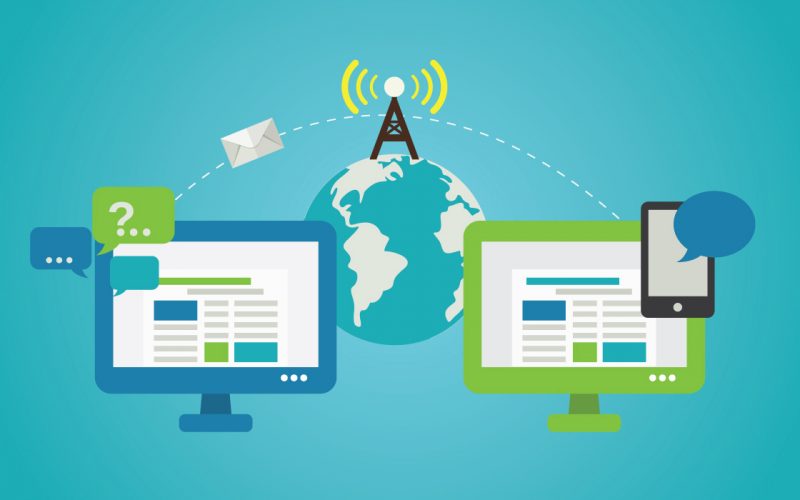Currently, chatbot is used predominantly for provision of customer service. Many businesses use chatbot to help the human agent with answering their customers’ inquiries. For instance, Veronika, a chatbot developed for Telkomsel that is integrated with LINE, Telegram, and Facebook Messenger to help engaging customers.
Let’s look at an example in the food-service industry. Imagine you’re hungry in the middle of the night and the nearest restaurant is at least 5 miles away, getting there and getting food all seems too hard that late at night. But if there is a more convenient way, such as a food delivery service, then why bother to go there by ourselves?
Moreover, as everything is digitally integrated, ordering our midnight snacks can be done with online chatting, no need to call anymore. The chatbot will greet us and ask us what food we would like to order, and the process will go on until the food is delivered. Surely that scenario describes chatbot as a great way for every business to reduce their human resource expenses. However, there are several things you must be aware that the current chatbot can and cannot do.
Chatbot is not omniscient, companies still need human resources
As practical as it sounds, the current technology of chatbot cannot handle multiple complicated tasks. Specifically, in the customer service arena, some inquiries still require the assistance of a human agent to be answered correctly. Additionally, some people may find chatbot is annoying to communicate with and they may prefer human-to-human interaction.
Mayur Anadkat, from Five9, said that although there will be an army of bots all over many businesses, companies still need to hire people to deal with everything a chatbot cannot deal with. Especially in light of the fact that chatbots are slow-learners. At the current level of development, chatbots are only capable of solving lower-level questions, complaints, and requests.

Amit Paka, from Medium, also states that although chatbot has made dramatic improvements since its early years, at the end of the day, current chatbots are mostly scripted and handcrafted. Spin too far from the script, and the most ‘useful’ answer you will get will be “I don’t understand the question” and voila, the conversation will be stuck at that point.
Given the complexity of human emotions, it is probably the questions asked vary widely, while the chatbot script still has limited coverage. The bot may have the capability to look at your data, account, calculate numbers, even automate administrative work. But the current chatbot still cannot fathom what its human interlocutor truly meant.
Hence, it is important to pair a chatbot with a human agent/s as the ideal solution. This way, the agent can help by answering the inquiries when the chatbot is not capable of doing so, thus reducing the possibility of a dissatisfied customer. However, this will, inevitably, sprout a new problem –that of how to make the combination of human and chatbot replies smoother.
Without smooth transitions, the customer service agents won’t necessarily know what the customer said in previous conversations with the chatbot before switching to them. Forcing them to ask the same questions again. This is considered bad customer service, as driving the customers to say the same things all over again makes them feel that they are not appreciated.
Increasing user experience is important
The potential to save the cost of the human agent may seem to be very enticing. It can even save some companies huge sum of money. Juniper Research even shows that automating the system with chatbot can save up to 8 billion dollars every year by 2022. But chatbot can be a double-edged sword as without a seamless system consisting of smooth transitions, not only are we unable to serve the customers better, but we will instead end up presenting them with a troublesome service.
Hence, we need our ‘customer service’ to be as friendly as it can be. We need to make the customers feel their questions are taken seriously and appreciated. In doing so, we want our chatbot to be able to greet the customer from the moment they are connected and tell the customer upfront that they are talking with a chatbot, not a human.
This will prevent the customers believing that they are talking with a human agent, leading them to lower their expectations and ultimately preventing them from being disappointed if the chatbot can’t answer them, as they know that only a human is capable of answering or processing their inquiries.
We can enhance the friendliness of the experience with the option of a seamless transition process when switching to a human agent. This ‘hospitable’ concept should be implemented within any companies that want to adopt a customer-service chatbot. They need a precise and practical solution to make the concept workable.
Addressing the problem of integrating human and bot into the customer service chat can provide a seamless experience for both the agent and the customer. Many tech companies offer this concept as one of their products, including Qiscus, a company that specializes in real-time communication. Qiscus built a dashboard, named Multichannel (Qiscus Multichannel Chat) that has the ability to make the collaboration of the chatbot and human agent smooth and seamless.
Through Multichannel, there is a technology that can recognize if the chatbot answers inquiries wrongly. The bot will automatically switch to a human agent if it wrongly answers up to three times. Furthermore, if it is switched, the human agent will get the previous log of chatbot-customer’s interaction, preventing the customer from having to repeat the questions or complaints all over again.
In consideration of this information, you can make the decision yourself as to whether you will adopt the chatbot fully and do without the help of human agents or not. It is clear that chatbot brings a lot of benefits we can enjoy and this new technology still has the potential to be developed further. However, we also have to remember that chatbot is currently still in its adoptive stage and cannot be fully relied on yet.



